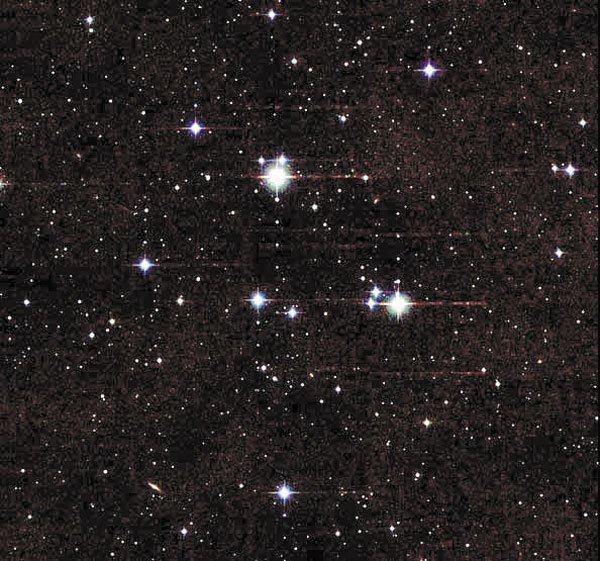Feb. 21: Sagittarius
Sagittarius is low in the southeast at first light at this time
of year. Tomorrow, it stands between the crescent Moon and Venus,
the brilliant
”
morning star.
”
The constellation’s brightest stars form the outline of a
teapot.
By The University of Texas McDonald Observatory
Feb. 21: Sagittarius
Sagittarius is low in the southeast at first light at this time of year. Tomorrow, it stands between the crescent Moon and Venus, the brilliant “morning star.” The constellation’s brightest stars form the outline of a teapot.
Feb. 22: Mercury and Venus
Two planets form an “honor guard” for the Sun, with one leading the Sun across the sky, the other following. Venus takes the lead. It is the brilliant “morning star” in the southeast at first light. Fainter Mercury trails the Sun, so it is visible very low in the west after sunset.
Feb. 23: Moon and Venus
Venus, the dazzling “morning star,” stands in the southeast at first light. It is to the upper left of the crescent Moon tomorrow, and directly above it on Saturday.
Feb. 24: Moon and Venus II
The thin crescent Moon and the planet Venus pair up in the southeast at dawn. Venus is the brilliant “morning star.” It stands almost directly above the Moon.
Feb. 25: Gamma Cephei
One star system where a planet might inhabit the zone where conditions is right for life is Gamma Cephei. It’s a binary system in the constellation Cepheus, which is low in the north on winter evenings. The constellation looks like a child’s drawing of a house, with Gamma Cephei forming the tip of the roof.
Feb. 26: Locked Moon
As the Moon orbits Earth, it keeps the same face turned our way because of an effect called “tidal locking.” The pull of Earth’s gravity created tides in the Moon’s solid surface. This altered the Moon’s rotation, so that the same hemisphere always faces Earth.
Feb. 27: New Moon
The Moon is new at 4:31am PST, as it crosses the imaginary line between Earth and Sun. The new Moon is lost in the Sun’s glare, but it should return to view tomorrow evening as a thin crescent low in the west shortly after sunset.














